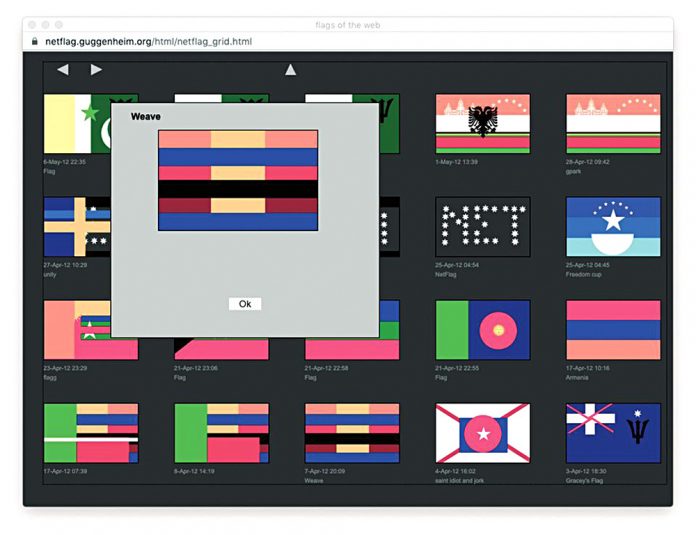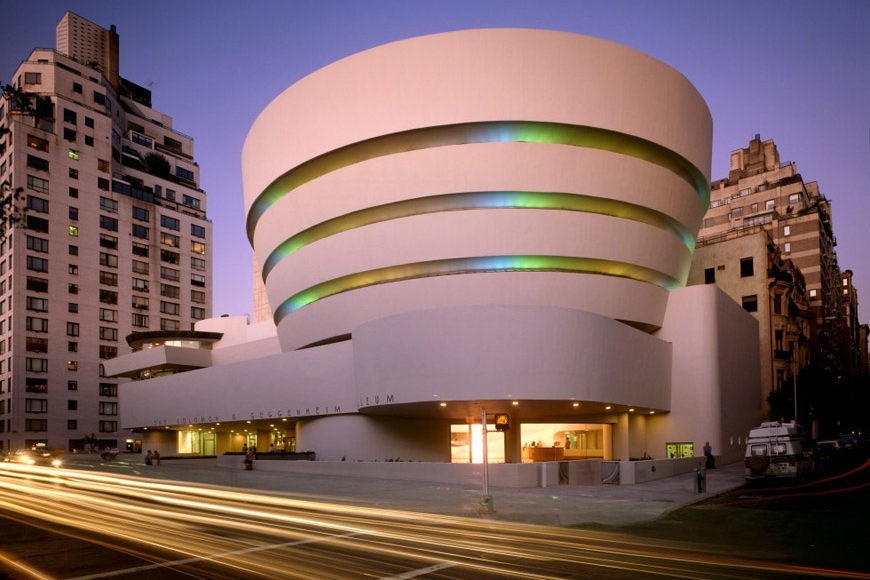
The digital world has changed dramatically over the past two decades. Of course, that’s great: times of painfully slow downloads and low-resolution graphics are over. But what fate awaits the online art of the past? Sites and applications created using outdated tools are subject to a phenomenon known as “data degradation”. In the case of early online art, this means that irrevocable loss can only be avoided with a kind of “restoration”.
The Solomon R. Guggenheim Museum in New York has three such “network works”. Since 2014, the museum’s restorers have been cooperating with the Department of Computer Science at New York University, where students are invited to participate in the analysis and preservation of works of computer art. Two of them, one dating from 1998-1999 and the other from 2002, were renovated between 2017 and 2018. The third, net.flag (2002) by Mark Neupir, started in March 2019 and was recently completed.
The idea of net.flag is to allow users to create their own digital flags based on the colors and elements of existing national flags. The original version of the work includes the flags of almost 60% of the countries recognized by the UN as of 2002. Mark Napier and his assistants analyzed each of them, determined the correct colors and proportions of the individual elements, and provided text comments explaining the meaning attributed to them. Users can view versions of their predecessors, as well as save and post their own creations.

Together with the author of net.flag and the curators at the Guggenheim Museum, New York University students analyzed the code of the work. It turned out that it was originally written based on Java applets, programs that are not supported by today’s Internet browsers. The process of transferring the work to the modern Javascript programming language was led by computer specialist Emma Dixon and Professor Dina Engels, a leading computer science course at New York University.
Lina Stringari, Deputy Director and Senior Restoration Director of the Solomon R. Guggenheim Foundation, believes that one of the main difficulties of digital restoration is that, on the one hand, it is necessary to preserve the original character of the work, and on the other hand, it is necessary to recognize: to survive, it simply has to develop. “Finding a balance is very difficult,” adds Stringari. And while net.flag has been restored to a similar “style” and the essence of the work remains the same, some aspects of it have changed.
The author wanted the new version to include the flags of all countries, including recently recognized states such as South Sudan. “It would be foolish to put up work on the flags of the world and not include them all – it would inevitably mean favoritism, colonialism, or something like that,” says Mark Neupir. In addition, conservation has made the jagged edges of old digital images smoother and added non-Latin text encodings, including for Arabic and Chinese.
Mark Napier has already renovated many of his works, so he realizes that network art requires constant attention. “Nothing is forever, it’s primarily a question of how long a work remains relevant,” he says. – Paintings are being restored because they are still important to people. I hope that net.flag will exist until it loses its relevance and I think it is still important in the current political climate. This work still speaks about the internet as a space of inter-tribal wars over territory.
























